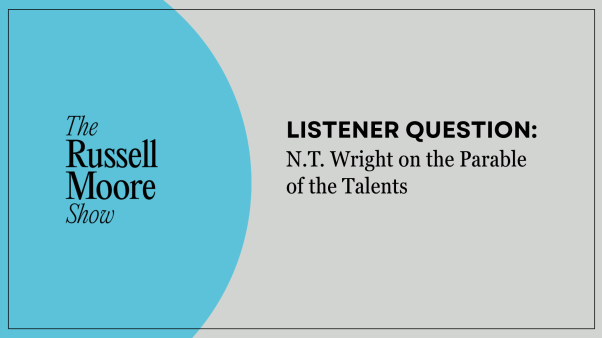Half a century ago, Archbishop Fulton Sheen’s weekly television series Life Is Worth Living (and later The Fulton Sheen Program) was watched by millions of Americans of all stripes. Sheen was “America’s Priest,” and since then there has been no comparable figure in American culture—and there may never be.

“All About that Bass” singer Meghan Trainor has announced she’s bringing booty back. When she comes on that radio, I can’t resist shaking what God gave me just a little bit. Her first hit song is catchy enough to have spent a month in the Billboard top 10, settling in as the No. 1 song in the country this week.
Meghan Trainor and I see eye to eye on a lot: We both like to dance. We like who we are. We agree that Photoshopped supermodels are whack. That her mama reassured her, “Don’t worry about your size,” just makes me want to meet her and her awesome mama.
As Nicki Minaj touts big-booty appreciation in “Anaconda” (with lyrics hijacked from “Baby Got Back,” in celebration of her own full figured derriere) and JLo and Iggy Azalea prepare to release another single honoring big booties, we’re “officially in the era of the big booty.” Women have at last entered the golden age of self-acceptance.
Or so it seems.
To be clear, 20-year-old Trainor does not articulate a Christian view of the body… and neither do Minaj, Lopez, or Azalea. They’re not even voicing a particularly feminist one. Jezebel and Feministing say that Trainor’s hit, being heralded as a body-friendly anthem, does not speak for them.
The affirmation of self-acceptance in “All About that Bass” sounds at first like a win. But the empowering message doesn’t hold up once she (and her mama) identify a man as the locus of authority for loving her curves:
'Cause I got that boom boom that all the boys chase
And all the right junk in all the right places…
Yeah my mama she told me don't worry about your size
She says, "Boys like a little more booty to hold at night."
So Trainor is entirely half-right.
The same disturbing message which drew criticism of “Baby Got Back” in the early nineties—namely that the acceptability of women’s bodies is determined by men—has simply been recycled: subtly by Trainor and quite explicitly by Minaj.
“All About That Bass” and “Anaconda” twist God’s good intentions for right relationship between the sexes to the degree that women’s identity is determined by the opinion of men. And they also trash women’s relationships with each other. Both songs honoring full-figured women do so by degrading slender women, identifying them as “skinny b—-es.”
Really? We can do better than this.
Trainor playfully backpedals from the slam to say she’s “just playing” but Minaj’s disrespect gets pretty graphic. A “self-esteem” that depends on devaluing other women’s bodies is no more robust than one that depends upon the acceptance of a man.
So the question remains: If not from being lifted up by men, and not from taking down other women, then where does a healthy “self-image” come from?
God simply does not give much play in Scripture to buoying whatever “image”—whether flimsy or robust—we have of ourselves. Nowhere in does the Creator invite us to spend a moment navel-gazing to decide whether or not our bodies are acceptable or we are acceptable. In Christ we just are. Every inch of us, from the bottom to the top.
I do hear the Lord’s gentle whisper offering freedom to women in Colbie Caillat’s song, Try. “You don’t have to try so hard” features women, old and young, dark and light, removing the makeup and treatments they’ve used to make themselves acceptable. (If you’ve felt confused by some of these videos promoting self-acceptance that are staged by women who’ve clearly been bronzed and lightened and sculpted and injected, you’re not alone.)
The freedom of not trying is what Tim Keller identifies as gospel-humility, claiming, “The essence of gospel-humility is not thinking more of myself or thinking less of myself, it is thinking of myself less.” This understanding comes from C.S. Lewis’ description of the “humble man” in Mere Christianity. Despite its gender-exclusive (though era-appropriate) language, Lewis’ description is actually a very apt one for the healthy woman who accepts her body as it is and not as the fashion industry or men would like it to be. Lewis explains of this “humble man:”
Probably all you will think about him is that he seemed a cheerful, intelligent chap who took a real interest in what you said to him. If you do dislike him it will be because you feel a little envious of anyone who seems to enjoy life so easily. He will not be thinking about humility: he will not be thinking about himself at all.
That’s the win, women: neither trying desperately to make ourselves acceptable or thinking less of ourselves, but simply thinking of ourselves less. In fact, whenever I ask women to identify another woman who “accepts her body,” they invariably name someone like Lewis describes. They tell me about a woman who is so unconcerned with herself—never needing to make excuses for a bad hair day or an unfortunate fashion faux pas—that she’s able to be entirely present to the person in front of her.
Though they are indeed a beautiful expression of God’s handiwork, our bodies weren’t made to be solely ornamental: they were made to be instrumental. They were given for the purpose of love. So the beautiful booty is the one that climbs nursing home stairs during a power outage to serve patients. It’s the one that rises from a sitting position to gently bounce a baby to sleep. It’s the one that stands for hours at a protest for human rights, and it’s the one using a wheelchair that does the same. And of course, a beautiful booty dances for joy. Those are booties doing what God made them to do.
Go ahead, accept the way your body looks. But don’t accept it because it appears acceptable to another or even because you or your mama find it so. Accept it because it’s already inherently acceptable.
Margot Starbuck is the author of Unsqueezed: Springing Free From Skinny Jeans, Nose Jobs, Highlights and Stilettos. Connect with Margot on Facebook.
That said, Father Robert Barron, a priest of the Chicago archdiocese and the Francis Cardinal George Professor of Faith and Culture at Mundelein Seminary, is making inroads into mainstream media in a way not seen since Sheen. On Sunday, October 3, Chicago-based superstation WGN America launched a weekly half-hour television series, Word on Fire with Father Robert Barron—the first regular commercial television show hosted by a priest since Sheen. Then there’s Catholicism, an ambitious ten-episode series, episodes of which are now airing on PBS affiliate in over 85 markets across the country..
Inspired by Kenneth Clark’s groundbreaking 1969 BBC series Civilisation, which ushered in a generation of globe-hopping documentaries, Fr. Barron and his crew employ a worldwide backdrop that includes the Holy Land, Europe, Africa, India, the Philippines—at least 50 locations in 15 countries. Unabashedly a work of advocacy, even evangelization, Catholicism offers a confident, upbeat overview of the scope of 2000 years of Catholic history, belief, thought and practice.
Much of this is the common heritage of all Christians, and Fr. Barron’s approach is catholic as well as Catholic, name-checking C. S. Lewis and N. T. Wright alongside Thomas Aquinas and Augustine. Evangelicals will feel very much at home for the first few episodes as Fr. Barron expounds upon the disorienting, challenging uniqueness of Jesus, the revolutionary power of his teachings, and the fathomless mystery of God. Other episodes, particularly those dealing with the Virgin Mary and the Eucharist, will challenge non-Catholic sensibilities, but Fr. Barron’s emphasis on Scripture and reason establishes a broad common ground, and open-minded Evangelicals will appreciate his presentation even when they disagree.
Fr. Barron makes an engaging, appealing spokesman for Christianity and Catholicism, and his method is consistently positive and nonpolemical. He discusses topics like Aquinas’s ways of proving God and Catholic Marian spirituality without going out of his way to oppose challenges like “God is a delusion” or “Catholics worship Mary.” The settings are more than window dressing; Fr. Barron goes to Auschwitz to discuss the problem of evil, and magnificent locations including Hagia Sophia, the Church of the Holy Sepulchre and the tomb of Mother Teresa help to bring the Faith alive to the senses and the imagination.
Click here and/or check local PBS listings for Catholicism. The series is also available as a five-disc DVD set at catholicismseries.com.
Here is the trailer for Catholicism:








